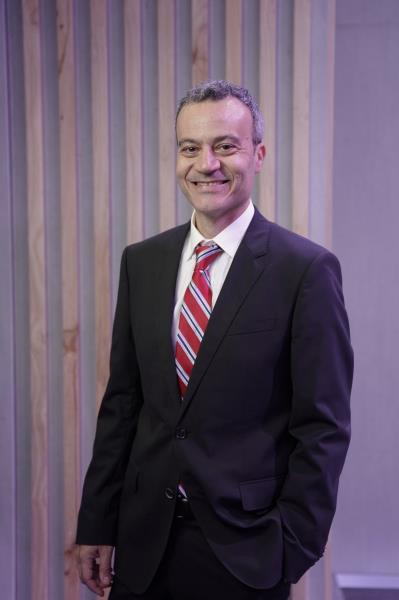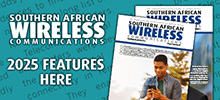13 March 2024
Chafic Traboulsi, vice president and head of networks, Ericsson Middle East & Africa
Data consumption is more than booming in Africa and the infrastructure is evolving to cater for it. However, 2G and 3G are not data enabling technology – it’s 4G and beyond that are most needed. As such, every time 4G coverage expands and device uptake increases, true broadband penetration advances.
Africa’s infrastructure is evolving alongside the pace of the evolution of the terminal. Sometimes there are regulatory barriers which discourage 4G adoption. However, we still see certain countries in Africa which have frequencies that are technology rather than non-technology limited
Our experience has shown that there’s a lot of frustration in relation to the services and products companies wish to provide but are hampered or prevented in doing so. There are limitations like high inflation rates, currency shortages, and a lack of power and water in some countries. Service providers who are conscious of these issues are planning ahead, working around the higher anticipated costs, and generally future proofing their infrastructure.
What is the role of E-band for Africa's future communication capabilities, and what opportunities does it offer for advancing communication in the region?
We are very much developing for the future. With every radio we make, we are thinking of how the networks of the future will evolve and we are designing with this in mind.
We’re targeting sustainability, creating products with smaller form factors that won’t overload the towers, and which use less power, which is very expensive in some countries, and in short supply in others. We want to ensure that we are doing our part, using the least possible power to reduce fuel consumption. When I say ready for the future, I'm talking about openness as well. With a mindset of openness, with open interfaces and platforms, for all mobile generations, Open-RAN, etc.
In Africa, the e-band frequency has been made available for the telecom sector, providing new opportunities for microwave point-to-point communications. It gives much higher bandwidth to support more data transfer, supporting Africa’s present data boom. It hasn’t yet been regulated in all countries, but when it is, it will help address the continent’s boom in data consumption. It’s much easier to implement than fibre and gives 10-20Gbps of throughput. At Ericsson, we're able to combine the normal microwave frequencies with e-band together on the same link and use all the bandwidth, the whole frequency. We have both the hardware components and the software to enable this full frequency use.
How big a role will FWA have in delivering meaningful connectivity across the continent?
For Africa, I think the main solution to bridging the digital divide in a meaningful way is linked to how we use fixed wireless access (FWA).
Why? Because it's easy to use. It can be shared between multiple low-income villages and works with both 4G and 5G. For me, it's a cornerstone and it's not by chance that we see it as the most successful application of 5G - it is the one that is being used everywhere, the market is developing, and prices of customer premises equipment (CPE) are dropping. This is going to have a big impact on ongoing adoption and help deliver meaningful connectivity across Africa.
What impact is AI having on the future of Africa’s networks?
AI is set to have a huge impact on Africa’s mobile networks. AI is penetrating everything right now, including how we operate the network. It doesn’t matter if it’s Africa, Washington DC, or Sao Paulo – AI is here.
Mobile networks in Africa are much the same as elsewhere, they have the same basic requirements. However, because the infrastructure is local, local challenges must be considered. This is where AI comes in, helping operators fix problems no matter the location, and exploit the networks to gain the best service.
The user can ask our AI engine, for example for the provision of a 20Mbps link in a specific area. The AI will look at the network components and tell the user exactly what they need. It also takes into consideration the parameters, for example, if the link must never drop below 2Mbps – that can be checked too. It even creates the loading algorithms and files, and then tells the user how to implement them.
AI is here, and it’s going to be used extensively in Africa, and the world.
With power instability rife throughout various parts of the continent, how can Africa’s CSPs support utilities providers in cost-effectively safeguarding supplies?
When we're designing products, we need to make sure that they consume the least power possible to accommodate the newer generation of mobile technologies. Our role is to try to combine 2G and 3G with the newer generations, 4G and 5G, so that they consume less power and require less hardware.
We’ve already achieved this back in 2021 with our Radio 6626, which is one radio for three sectors and two bands. The concept of combining technologies is not a novelty today. That innovation is something we work into every product.
Let's say your site consumes xMW per hour; when we bring in 5G to modernise the site, we need to make sure that power consumption does not increase. This needs to be managed wherever possible. In telecom, usually the site is the highest consuming part of the industry. It’s not during the equipment production in the factories, or during the shipping, but on site.
We believe in doing our share for Africa’s telcos in breaking the energy curve.






